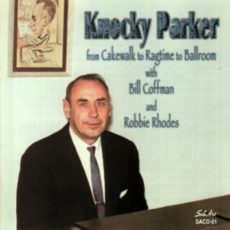
Daily Dose Of Jazz…
Knocky Parker was born John William Parker, II on August 8, 1918 in Palmer, Ellis County, Texas. By the Thirties he was playing in Western Swing bands such as The Wanderers and the Light Crust Doughboys through the end of the decade before serving in the military during World War II.
After the war Parker worked with Zutty Singleton and Albert Nicholas, then earned a Ph.D in English and taught at Kentucky Wesleyan College and the University of South Florida. While fulfilling his teaching responsibilities he worked with Doc Evans, Omer Simeon, and Tony Parenti, among others, as well as working as a solo artist.
In the early 1960s he recorded every Scott Joplin rag, one of the first to do so. In addition, he recorded the complete works of Jelly Roll Morton. Knocky recorded extensively, for the labels Texstar, Paradox, GHB, London, Audiophile, Jazzology, and Euphonic.
Pianist Knocky Parker, who played primarily ragtime and Dixieland jazz passed away on September 3, 1986 in Los Angeles, California.
Sponsored By
www.whatissuitetabu.com
![]()
More Posts: piano
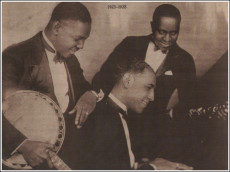
Daily Dose Of Jazz…
Louis Stanley Hooper was born on May 18, 1894 in North Buxton, Ontario, Canada but was raised in Ypsilanti, Michigan and studied piano at the Detroit Conservatory, playing locally in dance orchestras in the 1910s. Around 1920 he moved to New York City and recorded frequently with Elmer Snowden and Bob Fuller in the middle of the decade. He was known to perform with both of them in Harlem as well as with other ensembles.
Lou served for some time as the house pianist for Ajax Records, accompanying many blues singers on record, including Martha Copeland, Rosa Henderson, Lizzie Miles, Monette Moore and Ethel Waters. He was a participant in the Blackbirds revue of 1928.
In 1932 Hooper returned to Canada, where he played in Mynie Sutton’s dance band, the Canadian Ambassadors. Working locally as a soloist and in ensembles for the next two decades, he was brought back into the limelight by the Montreal Vintage Music Society in 1962.
Lou recorded a two-LP set with Bill Coleman titled UK LIve:Satin Doll, Vol. 1 & 2 in 1967 and released an album as a leader of ragtime piano tunes in 1973 titled Lou Hooper, Piano.
Wearing the educator hat, he taught at the University of Prince Edward Island late in his life and appeared regularly on CBC television in Halifax. Pianist Lou Hooper passed away on September 17, 1977 in Charlestown, Prince Edward Island. His papers, which include unpublished compositions and an autobiography, are now held at the National Library of Canada in Ottawa.
![]()
More Posts: piano
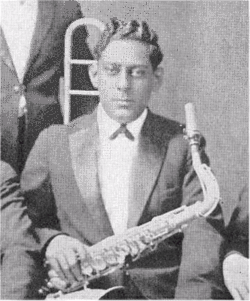
Daily Dose Of Jazz…
Lorenzo Tio Jr. was born on April 21, 1893 in New Orleans, Louisiana and raised in Bay St. Louis, Mississippi. Following in the footsteps of his father Lorenzo Sr. and his uncle Louis “Papa”, he also became a master clarinetist. Their method of playing the instrument, which involved the Albert system, a double-lip embouchure and soft reeds, was seminal in the development of the jazz solo.
Tio Jr.was instrumental in bringing classical music theory to the ragtime, blues and jazz musicians of New Orleans and he eventually played jazz himself. His main instrument was clarinet also played the oboe and joined Manuel Perez’s band in Chicago, Illinois in 1916 and Armand J. Piron’s from 1918 to 1928, recording with Piron, Bechet, Jelly Roll Morton and Clarence Williams.
As an educator among the reed players to impact early jazz who studied under Lorenzo’s direction were Sidney Bechet, Barney Bigard, Johnny Dodds, Omer Simeon, Louis Cottrell Jr., Jimmie Noone and Albert Nicholas. He taught Bigard what would become the main theme to the famous Ellington tune Mood Indigo.
Tio gigged in legendary New Orleans large ensembles such as the Lyre Club Symphony Orchestra during the late 19th century. He played in smaller combos, traditional brass bands, had a standing collaboration with Papa Celestin whenever he was in the Big Easy, and performed with the Tuxedo Brass Band.
Despite his strong ties to New Orleans, he regularly played the New York jazz scene on steamboats running between the state capitol in Albany and the Big Apple. During the late ’20s and early ’30s, He had a regular stint at The Nest Club in New York City. Clarinetist and educator Lorenzo Tio Jr., who also played oboe and tenor saxophone, passed away on December 24, 1933.
![]()
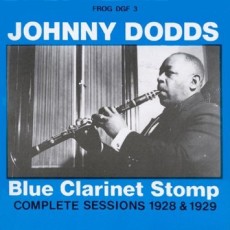
Daily Dose Of Jazz…
Johnny Dodds (pronounced dots) was born April 12,1892 in Waveland, Mississippi and moved to New Orleans in his youth, and studied clarinet with Loranzo Tio. He played with the bands of Frankie Duson, Kid Ory and Joe “King” Oliver.
Dodds went to Chicago, Illinois to play with Oliver’s Creole Jazz Band, with whom he first recorded in 1923. He also worked frequently with his good friend Natty Dominique during this period, a professional relationship that would last a lifetime.
After the breakup of Oliver’s band in 1924, he replaced Alcide Nunez as the house clarinetist and bandleader of Kelly’s Stable. He recorded with numerous small groups in Chicago, most notably Louis Armstrong’s Hot Five and Fot Seven, Jelly Roll Morton’s Red Hot Peppers and Lovie Austin.
Noted for his professionalism and virtuosity as a musician, and his heartfelt, heavily blues-laden style, Dodds was an important influence on later clarinetists, notably Benny Goodman.
Along with his younger brother drummer Warren “Baby” Dodds, they worked together in the New Orleans Bootblacks in 1926. As a leader he recorded prolifically between 1927 and 1929, recording for Paramount, Brunswick/Vocalion, and Victor. Affected by ill he recorded two more sessions in 1938 and 1940 both for Decca before passing away of a heart attack in Chicgo, Illinois on August 8, 1940. In 1987, clarinetist and alto saxophonist Johnny Dodds was inducted into the Down Beat Jazz Hall of Fame.
![]()
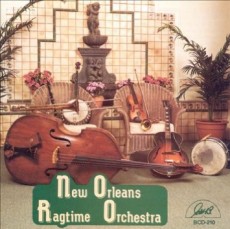
Daily Dose Of Jazz…
William Russell was born Russell William Wagner on February 26, 1905 in Canton, Missouri. He learned to play the violin and throughout his career contributed to many a performance. When he decided to become a classical music composer he changed his name, transposing first and second and dropping his last.
He was a leading figure in percussion music composition, influenced by his acquaintances John Cage and Henry Cowell. In turn, he also influenced Cage, in his emphasis of percussion. During the 1930s, predating Cage’s main work, Russell’s percussion works called for vernacular textures such as Jack Daniels bottles, suitcases, and Haitian drums, and pianos.
One notable performance of his Fugue For Eight Percussion Instruments took place in 1933 at Carnegie Hall, with the ubiquitous and influential critic-writer-performer Nicholas Slonimsky conducting. These performances took place under the auspices of the Pan-American Association of Composers, an organization that was composed of Cowell, Slonimsky Ruth Crawford Seeger, Edgard Varese and other luminaries of American ultra-modernism.
Bill was also one of the leading authorities on early New Orleans jazz, authoring articles and books, including three essays in the milestone book, Jazzmen and the voluminous 720-page Jelly Roll Morton scrapbook, Oh, Mr. Jelly. He made many recordings of historical interest, founded American Music Records, helping bring many forgotten New Orleans performers, including Bunk Johnson back to public attention and became an important force in the New Orleans jazz revival of the early 1940s.
Moving to the French Quarter of New Orleans in 1956, he opened a small record shop from which he also repaired violins. Russell played violin with the New Orleans Ragtime Orchestra, co-founded and became the first curator of The Hogan Jazz Archive at Tulane University in 1958,
Russell collected a large quantity of material related to the history of New Orleans, early jazz, ragtime, blues, and gospel music, all of which he kept in his French Quarter apartment. During his lifetime he always was willing to share access to the material with serious researchers.
At his death on August 9, 1992, Bill Russell, the single most influential figure in the revival of New Orleans jazz that began in the 1940s, bequeathed his collection to the Historic New Orleans Collection, where it continues to be a valuable resource for researchers in the city that became his last home.



